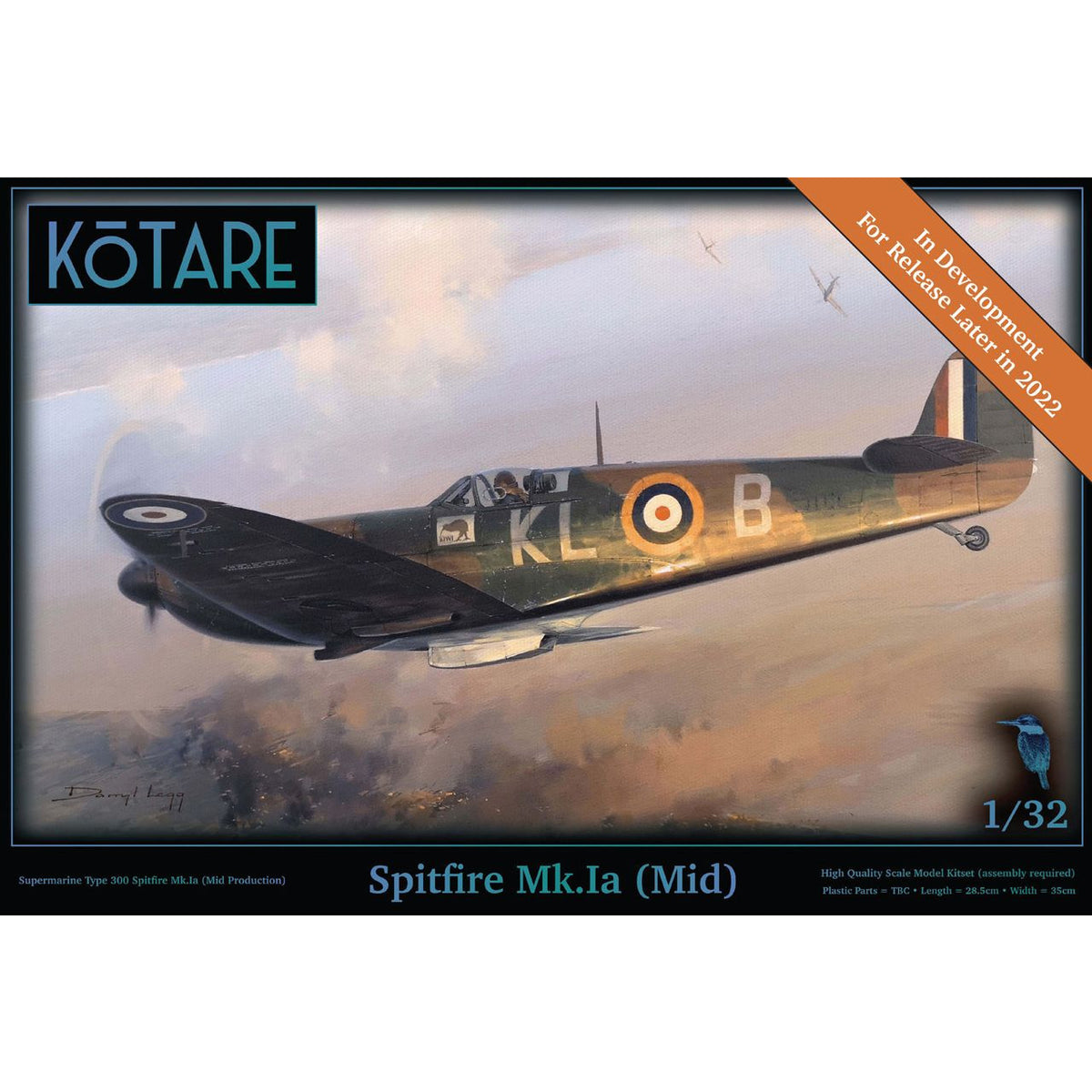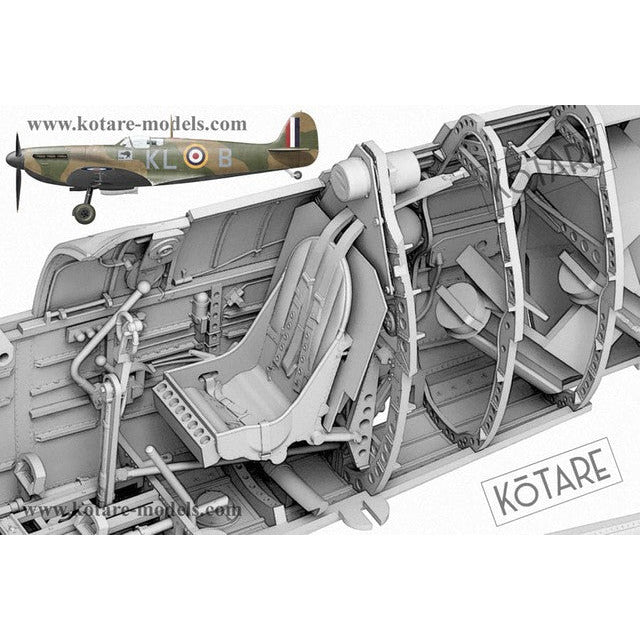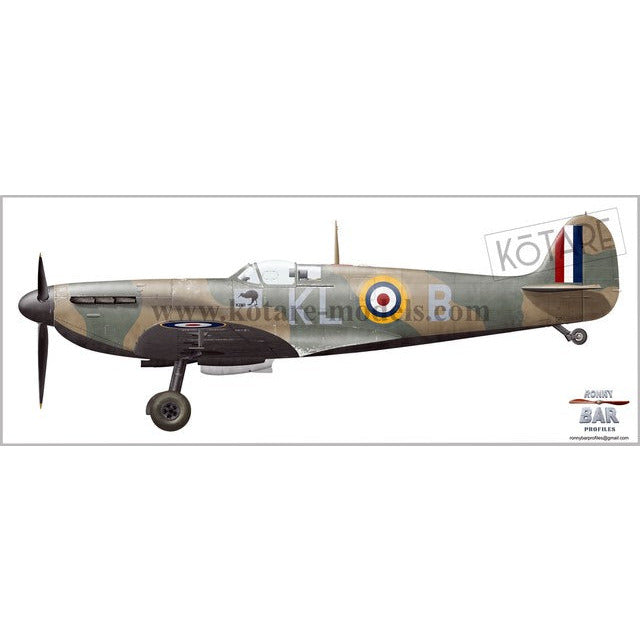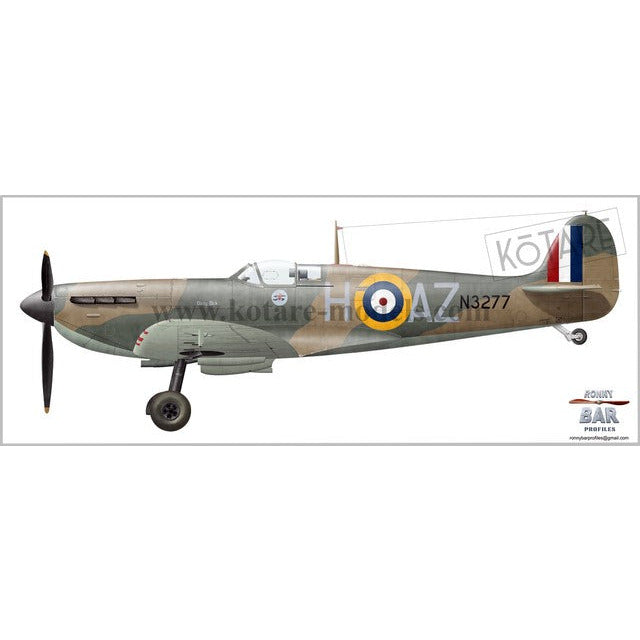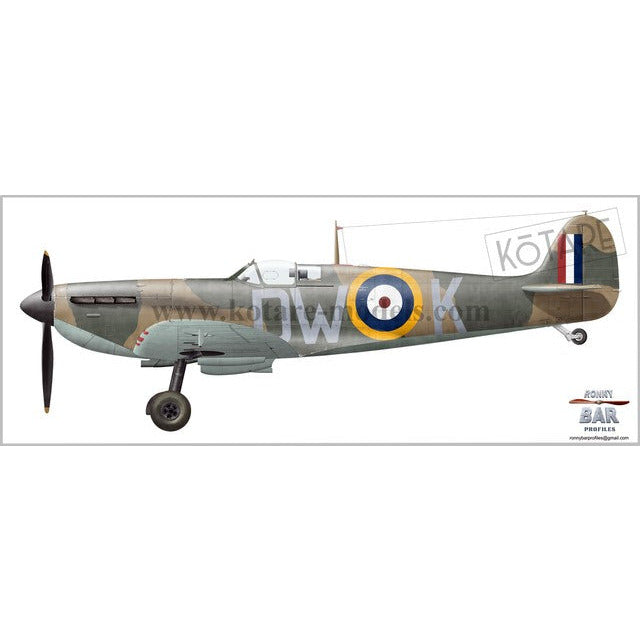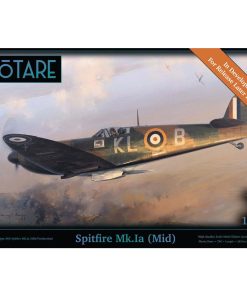KOTARE 1/32 Spitfire Mk.Ia (Mid) KOTARE MODELS
$ 188,99 $ 75,60
KOTARE 1/32 SPITFIRE MK.IA (MID)
High quality injection moulded plastic scale model kitset requiring assembly and paint – 117 high-quality injection moulded plastic parts – 35cm wingspan – Optional DeHavilland and Rotol propellers – Optional TR.9D and TR.1133 wireless controllers and aerials – Optional pilot’s seats with and without Sutton Type K harness detail – Optional open and closed cockpit doors – Optional open and closed canopy & hood – 28 page fully illustrated instruction manual – Hand pump undercarriage retraction and wheel well jack detail – Wheels with weighted tyres featuring correct alignment – High quality Cartograf decals with 3 mid-production Spitfire Mk.Ia colour schemes.
The legendary Supermarine Spitfire Mk.I is undoubtedly one of the most famous aircraft of all time. This was in no small part due to its performance during the Battle of Britain from July 1940 to October 1940 where, despite being less numerous than the similarly powered and armed Hawker Hurricane Mk.I, it proved to be the aircraft that mostly captured the imagination of the public. Designed from 1934 under the guidance of Supermarine chief designer RJ Mitchell and Alfred “Alf” Faddy, the prototype Spitfire first flew on 5 March 1936 and production aircraft began entering service with the RAF in May 1938.
Early production Spitfire Mk.I in the K9### & L10## serial number range (completed between May 1938 and September 1939), were powered by a 1030hp Rolls-Royce Merlin II engine and featured a 2-blade fixed pitch propeller along with numerous modifications to the original prototype design including revised engine top cowling (after K9787), wings mounting 8 Browning .303” machine guns, triple ejector nozzle outlet exhaust manifolds, revised sheet metal panelling, windscreen, radiator intake fairing, tall un-tapered aerial post, tailwheel and a rear fuselage adorned with raised rivets for ease of construction. The wings and front of the fuselage remained flush riveted and were additionally puttied over and sanded smooth for improved performance. Numerous improvements were introduced throughout production, most of which were eventually retrofitted to earlier aircraft which included gun heating, Rolls-Royce Merlin III engine, 3-blade dual-pitch De Havilland propeller (later modified to constant speed), simplified construction exhaust manifolds, a taller canopy hood for improved visibility, armoured windscreen glass and plating over the upper fuel tank and the associated shorter engine cowlings.
Mid production aircraft in the N3### & P9### serial number range (completed between September 1939 and April 1940), saw the introduction of an improved “dual locking lever” cockpit door catch, tapered aerial post, a voltage regulator positioned behind the pilot’s headrest, constant speed De Havilland propeller and, on selected aircraft, constant speed Rotol propellers and the temporary installation of the TR1133 VHF radio which did not require an external aerial wire.
Late production aircraft such as those in the R6###, R7### & X4### serial number range (completed between May 1940 and April 1941) and AR2## (from July 1941 to January 1942) featured armour plating behind the pilots seat & headrest (which was retrofitted to earlier production aircraft), engine driven undercarriage retraction (replacing the cumbersome hand pump) along with numerous incremental changes such as a composite “plastic” seat, firewall, revised “raised rivet” radio access door, station keeping lights in the fuel tank plating, re-installation of the TR1133 VHF radio and saw the elimination of the gauge for the top fuel tank, fuel pressure gauge, priming cock and front forced landing/parachute flare tube. Some Mk.I were armed with 2 Hispano 20mm cannons without any Browning .303” guns, which were subsequently re-installed, and became known as the Spitfire Mk.Ib (necessitating the 8 Browning .303” gun armed aircraft being re-named the Spitfire Mk.Ia). Numerous engine, airframe and armament improvements were made to the Spitfire before production ceased in 1948, by which time over 20000 Spitfires had been produced in a couple of dozen variants. Basically the most notable variants were the 1030hp Mk.Ia, 1470hp Mk.Vb, 1720hp Mk.IXc, 2035hp Mk.XIVe, the unarmed photo-reconnaissance Mk.XI and the navalised Seafire Mk.III.
Quick Shipping and Professional Packaging
Due to our long-term partnership in a long-standing partnership with UPS, FedEx, DHL and many other leading global carriers, we are able to offer an array of shipping options. Our warehouse staff are highly trained and will pack your products according to our precise and precise specifications. Your items will undergo a thorough inspection and be securely secured prior to being delivered. We ship to thousands clients each day across multiple countries. This is an indication of our dedication to being the biggest online retailer in the world. The warehouses are located in Europe as much as they are in the USA.
Note: Orders that include more than one item are assigned a processing time in accordance with the item.
Prior to shipment before shipping, we'll inspect thoroughly the items you've ordered. The majority of orders are shipped within 48 hrs. The time to deliver varies from 3-7 days.
Returns
We don't manage the stock in our warehouse and factory. Stocks are subject to change at any moment. You may not receive your order after the order has been made.
Our policy is for 30 days. If you have passed 30 days by since your purchase, unfortunately we can't offer you a refund or exchange.
The item cannot be used and in its original condition. It should also be in the original packaging.
Related products
RADIO CONTROL
RADIO CONTROL
RADIO CONTROL
(Clearance Item) HB RACING 44mm Heavy Duty Universal Drive Shaft/Rear/Steel/2Pcs HB RACING
RADIO CONTROL
RADIO CONTROL
RADIO CONTROL
RADIO CONTROL
RADIO CONTROL
RADIO CONTROL
RADIO CONTROL
RADIO CONTROL
RADIO CONTROL
(Clearance Item) HB RACING 5 Cell Main Chassis 2.5mm with Battery Tray (Cyclone) HB RACING
